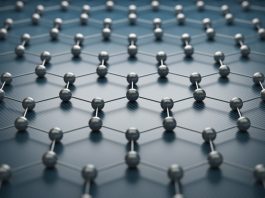Researchers have successfully designed a new solar-powered nanodevice that can sustainably split water atoms to produce hydrogen.
In their recent paper, published in Biomedical Spectroscopy and Imaging, Nagoya University researchers outline their plans to develop a solar-powered nanodevice that generates hydrogen.
Splitting water using solar power
Inspired by the way plants convert solar energy into chemical energy, the research team designed a gold nanoparticle conjugate that could be used as a platform to develop a semi-artificial photosynthesis system. Using this light-driven nanodevice, researchers were able to generate hydrogen by splitting water atoms.
“Photosynthesis in plants and algae is an efficient means of converting light and energy to produce storable chemical energy. Artificial photosynthesis, which mimics natural photosynthesis but directly generates fuels such as alcohols and hydrogen rather than sugars, may be the key to solving our energy problem,” explained lead investigator Takumi Noguchi, PhD, Division of Material Science, Graduate School of Science, Nagoya University, Nagoya, Japan.
Binding cyanobacterial photosystems
The team assembled cyanobacterial photosystem I (PSI) and photosystem II (PSII) complexes on a gold nanoparticle (GNP) to generate a PSI-GNP-PSII conjugate through genetically modified histidine tags attached to the PSI and PSII proteins. The research team measured single-particle fluorescence using a cryogenic microscope and conventional optical absorption. These fluorescence measurements provided definitive evidence that both PSI and PSII complexes are bound together to a single GNP in the generated PSI-GNP-PSII conjugate.
This research team has previously shown that PSII core complexes retained the oxygen evolving activity in PSII-GNP conjugates, in which the PSII complexes are bound to GNPs on the electron-acceptor side. There is evidence that PSI complexes can evolve hydrogen upon irradiation using electron donors when they are coupled to platinum nanoparticles.
“Thus, the PSI-GNP-PSII conjugate that we generated in the present study can be a useful platform for further development of a light-driven, water-splitting nanodevice for production of hydrogen from water using solar energy,” concluded Dr Noguchi.









